aeronmelon 6m ago • 100%
"I like it black... like my Security Officers."
Tuvok smiles to himself
aeronmelon 8m ago • 100%
That sounds creepy, but that also kinda sounds like Van Gogh.
Was it a Doctor Who novel?
aeronmelon 12m ago • 100%
Uh oh...
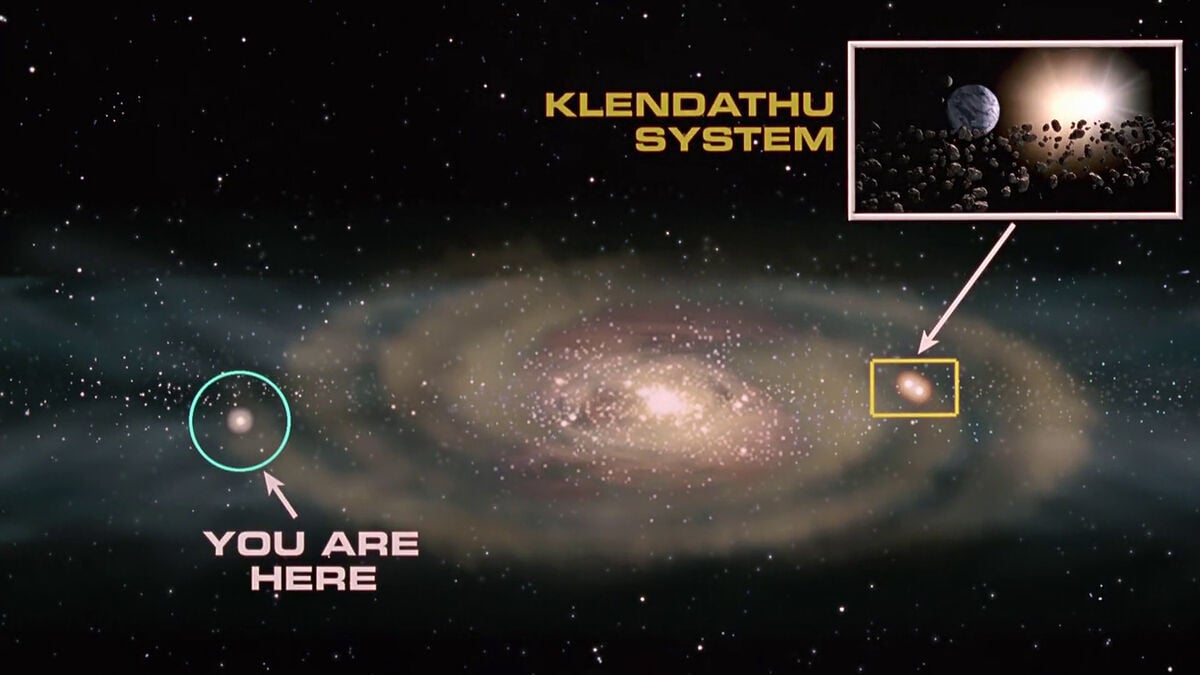
aeronmelon 16m ago • 100%
I mean, they let the Johnny the Homicidal Maniac guy make a children's cartoon. What else was going to happen?
aeronmelon 21m ago • 100%
Empire State Building: "Oh no, anyways..."
aeronmelon 22m ago • 100%
It looks like they ripped that thing right off of a telephone pole.
aeronmelon 29m ago • 100%
Like a late-stage GeoCities website when the server-side Javascript injection had gotten completely out of hand.
aeronmelon 3h ago • 100%
Just adapt The Llama Song.
“Here’s a Tuvok,
There’s a Tuvok,
And another little Tuvok,
Fuzzy Tuvok,
Funny Tuvok,
Tuvok, Tuvok, Neelix.”
aeronmelon 4h ago • 100%
“And if you could just take care of the Balrog problem while you’re at it, that’d be greeeat.”
aeronmelon 4h ago • 100%
Milton: “I can… set Mordor on fire.”
Bob: “Mordor is already on fire.”
later
Other Bob: “I don’t know how he did it, but he set the fire on fire.”
aeronmelon 5h ago • 100%
Deep in the heart attack of Texaaas!
aeronmelon 18h ago • 100%
You mean besides Sir Patrick Stewart?
He shouldn’t have come back either.
aeronmelon 18h ago • 100%
The only people who need to hear this won’t listen.
aeronmelon 19h ago • 100%
3D cell-like animation has gotten so much better. Check out a series called D4DJ.
aeronmelon 19h ago • 100%
Map Men are a treasure.
aeronmelon 21h ago • 100%
Dante could not have possibly envisioned all the different circles necessary to encompass our sins.
aeronmelon 1d ago • 100%
Oh boy, here I go posting this video again…

cross-posted from: https://lemmy.dbzer0.com/post/29812202

_Above: A 6-car JR West 189 series train set on the Kounotori Limited Express service, parked at Amagasaki Station in 2013._ The JNR (Japan National Railway) 183 series trains were introduced in 1972. They were the direct descendants of the similarly-designed 485 series. They featured a more simplified conductor's cabin (without a protruding nose cone) and other improvements, including the ability to link their drive trains to other models for tandem locomotion. The 183s retained many distinctive stylings of the 485 series, such as the dark cream & dark red livery and the metallic hood ornaments. In 1973, some retired 485 series chassis were refitted with 183 frames and returned to service as the (strangely-numbered) 381 series train. These trains featured tilting bogeys to allow them to take curves at higher speeds. They were visually identical to newly-built 183s with a few telltale changes to the classic livery. From 1974, newer editions of the 183 were introduced with further improvements. A handful of sets were strengthened against snow and cold weather. These sets were originally labeled as 183-1000 & 183-1500, but would later be referred to as 189s. At some point another minor derivative of the 183 series was planned as the 187 series, but never entered production. Following the privatization of Japan's railways, the trains were owned and operated by both JR East and JR West. The 183 & 189 series underwent refurbishing between the 1990s and the 2000s, the 381s were refurbished during the 2000s and the 2010s. All 183/189/381 series trains were taken out of regular service between 2011 & 2015 and replaced with newer rolling stock. The last 183 series trains were formally retired in 2019 and the last 381 series trains were formally retired in the summer of 2024. Many sets have been preserved at various museums throughout Japan. _Two preserved 183s on display at the Railway Museum near Omiya Station in Saitama in 2024. The interior seating has been restored and is open to the public for eating boxed meals inside the train anytime during museum hours._   Pictures taken by me in 2013 and 2024. Part of my Rolling Stock series of posts. Previous Rolling Stock posts: - [JR East 253-1000 Series Express Train](https://lemmy.world/post/19838347) - [Izukyu 2100 Series "The Black Ship Train (Kurofune)" Resort Liner](https://lemmy.world/post/19371099) - [Toei 6000 Series Streetcar](https://lemmy.world/post/19264388) - [JR East E491 "East iE" Track Inspector](https://lemmy.world/post/18994608) - [JR E351 "Azusa" Express Liner](https://lemmy.world/post/18791659) - [JR East 185 Series Limited Express Liner](https://lemmy.world/post/18407264) - [Sotetsu 20000 Series](https://lemmy.world/post/18245463) - [JNR 9600 Class Steam Locomotive](https://lemmy.world/post/18033470) - [Tobu 100 Series "Spacia" Strawberry Edition](https://lemmy.world/post/17901974)

cross-posted from: https://lemmy.world/post/20696791 > Screenshot of a Mastodon post - A picture of the bridge of the Enterprise-D from Star Trek The Next Generation’s first season. In it are Captain Picard, Doctor Crusher, and Wesley Crusher in the Captain’s chair. > > The text reads: > “Wil Wheaton is now five years older than Patrick Stewart was in the pilot of Star Trek the next generation. Have your bones demineralized and fallen apart yet?” > > [Original post](https://beige.party/@Kierkegaanks/113276549980331844) @ Mastodon

Screenshot of a Mastodon post - A picture of the bridge of the Enterprise-D from Star Trek The Next Generation’s first season. In it are Captain Picard, Doctor Crusher, and Wesley Crusher in the Captain’s chair. The text reads: “Wil Wheaton is now five years older than Patrick Stewart was in the pilot of Star Trek the next generation. Have your bones demineralized and fallen apart yet?” [Original post](https://beige.party/@Kierkegaanks/113276549980331844) @ Mastodon

Screenshot of Lemmy via Voyager of a meme and one of the comments replying to it. The meme is a picture of an invertebrate and reads: “This is Suzy. Suzy is a basal amniote. She enjoys sitting in the sun, catching bugs, and laying eggs with extraembryonic membranes. 312 million years ago Suzy had two kids. One evolved into you and the other into a T-Rex. If Suzy isn’t metal as fuck I don’t know who is.” The reply to this meme reads: “Yeah, it seemed weird that Janeway and Tom Paris turned into this, but I get it now.”
JR東海「60年分の会いにいこう」 A commercial commemorating the 60th anniversary of the Shinkansen. From YouTube (translated): Thanks to you, on October 1, 2024, the Tokaido Shinkansen celebrated its 60th anniversary. We have put 60 years of memories and gratitude into the video, along with past trains and in-car chimes, and photos and videos sent in by customers. Today and in the future, the Tokaido Shinkansen will support your "going to see" journeys.

This man is old enough to have voted for Roosevelt in 1944! (I assume he voted Democrat)

_Above: On the entrance level of Takanawa Gateway Station looking across the open area above the platform level as passengers board a Yamanote Line train._ Let's try something different. In 2014, JR East announced that they would build a new station on an area of the existing Tamachi Depot in southern Tokyo that would service the Yamanote Line and the Keihin-Tohoku Line. It was the first new station to be built on the Yamanote Line since 1971 and the first to be built on the Keihin-Tohoku Line since 2000. Takanawa Gateway Station (高輪ゲートウェイ駅) began construction in 2017 and was to be opened in advance of the 2020 Tokyo Olympics. Even though the station opened on schedule, it began service 10 days prior the 2020 Olympics being postponed to 2021 due to the worsening COVID-19 situation worldwide.  An opposing view of tracks 1 & 2 on the platform level below. A counter-clockwise Yamanote Line train is departing (left) just as a clockwise Yamanote Line train arrives (right). While the station opened to commuters in early 2020, facilities inside the station and adjoined buildings outside the station continued to be worked on all the way through to 2024. In 2025, the south ticket gate is scheduled to open to the public which will mark the completion of construction on the station.  The north ticket gate of Takanawa Gateway Station. Inside and to the left, shopping and dining. Inside and to the right, access to the platform level for the two lines. Directly behind, walkway to shopping centers and condominiums that were still being constructed at the time the photo was taken. The majority of the station is built above ground, hovering over the tracks and their platforms. The center of the station's entrance level is open to the ground below which allows most people inside the ticket gate to see the trains on all four tracks coming and going with ease. The entire station is shielded from the weather by a steel latticework roof suspended high above the entrance level. Above the entrance is a smaller level with shops and restaurants.  If you look closely, you can see that wood has been integrated into the support beams of the roof. Takanawa Gateway Station is built in almost the same area that the Takanawa Great Wooden Gate once stood as the southern entrance to pre-Tokyo Edo. In a way, this station takes over the duty of ushering people from the south into the city, so the subtle woodwork seems to be a nod to that connection. Otherwise, the entire station is steel and glass. Outside the station, the elevated entrance leads to additional elevated walkways that connect the station to nearby shopping centers, offices, and residential buildings. The land around the station, which was largely devoid of people, is being repurposed as dense inner-city living and commerce.  The rest of Tamachi Depot that continues to operate as a depot. The Tokaido Shinkansen passes beside Takanawa Gateway Station between Shinagawa and Tamachi Stations. That menacing Bond villain-looking building belongs to NTT docomo (a major Japanese telecom). The name Takanawa Gateway was chosen by JR after holding a public poll in 2018 asking the people of Japan was the station should be called. The results of that poll showed the names Takanawa, Shibaura, and Shibahama winning the most votes. However, JR unilaterally chose the name Takanawa Gateway despite it being towards the bottom of the list of contenders. This caused public criticism over why the vote was held in the first place and an attempt to petition JR to use one of the winning names instead. JR did not alter their decision, defending their choice as a name that best reflected the future development of the area (Takanawa as the area, and Gateway as a "Gateway to Edo" referencing the Takanawa Great Wooden Gate which was the old southern entrance to the city of Edo).  A giant video wall on the far end of the entrance level. It plays a looping presentation of the history of this area of Tokyo, as well as the history of local rail transport. Additionally it shows the local weather and other information. Considering this station is relatively small and only serves two lines with no connections (not even to very close by Sengakuji Station on the Toei Asakusa Line), it is unusually stylized and very expensive (the cost to build the station is unknown). Its high quality nature makes sense as the surrounding area is being completely redeveloped to bring in new residents and tourists to the tune of 500 billion yen. Useful if you live or work here, but most people are just going to see it from inside the train car while on their way to Shinagawa or Tokyo. All pictures taken by me in 2020. Part of my Stations series of posts.
It cannot be overstated how limited budgets led to some of the best writing on TV. And this episode is one of the best-written in the entire franchise. It's also my absolute favorite shot of Uhura: 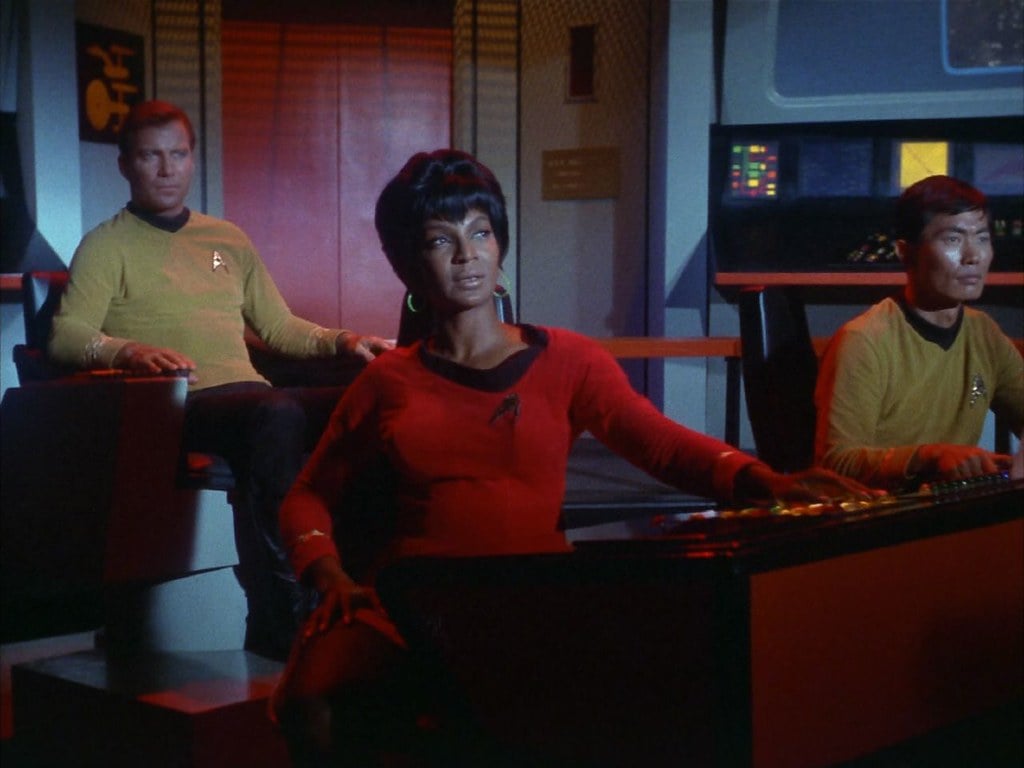 Ensign Skippy was getting a little too political, so Uhura replaced him and fired the death blow against the Romulan Bird of Prey. And she just leans back and takes it in during this dolly shot of the bridge. Stone Cold.

_Above: A Toei 5500 series Rapid service train (left), inbound for Keisei-Asakusa Station meets a Keisei 3700 series Rapid service train (right), outbound for Keisei-Sakura Station @ Keisei-Funabashi Station on the Keisei Main Line in 2023._ ...Keisei. :) Picture taken by me, part of my Random Photos series of posts. Previous Random Photo posts: - [JR Sobu Rapid Line Double Layover](https://lemmy.world/post/17452902)

Social media post on Mastodon by Dan Moren. It reads, “ My son just got me out of talking to a door-to-door cable salesman so I guess parenthood was all worth it.”

_Above: OM-N02, one of two 253-1000 series train sets, parked on standby at Shin-Tochigi Station on the Tobu Nikko Line in 2024._ The JR East 253 series of express trains were constructed in 1991, and are best known for their service as the Narita Express between 1991 and 2010. From 2009, all 253s were gradually replaced with E259s. Two of the retired 253s were refurbished as the 253-1000 series, repainted, and moved to the Tobu Nikko and Kinugawa lines to serve as Limited Express liners from 2011 to the present day. 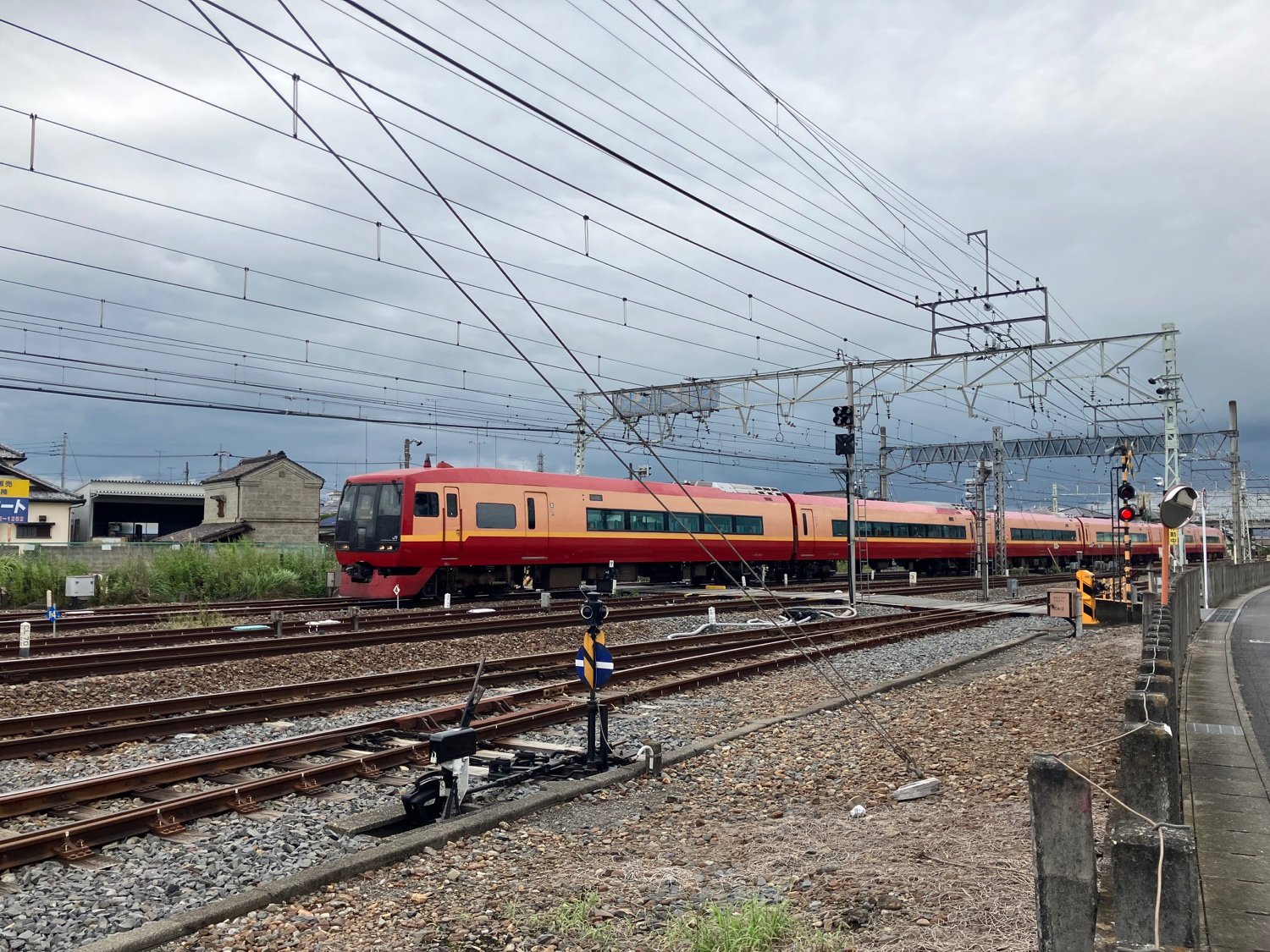 OM-N02 speeding towards Tokyo, just outside of Shin-Tochigi Station. The two trains are a rare sight to see in motion. They run from Shinjuku Station to Tobu-Nikko Station and Kinugawa-Onsen Station, respectively. They were refurbished to have more passenger seating and more windows per car. The Green Cars, which served as business class seating on the Narita Express, were converted to regular seating. While the trains used to have a bright red and white livery, they now have a moodier color scheme with darker reds and other colors that represent the shrines and flora along those two lines. The trains still retain the unique air horn siren that is ubiquitous on the Narita Express (sound on):  A 253-1000 passing through Kassemba Station on its way to Tochigi Station. The 253-1000s replaced the older 189 series & 485 series trains that had been running the Limited Express service on those lines (more about those bad boys another time). The Tobu 100 series "Spacia" trains are now the only other model on those lines. Although the 253-1000s began service in June 2011, they were suppose to start running earlier in the year. Their inaugural runs were postponed due to power outages caused by the Tohoku Earthquake. The 485s continued to operate on a reduced schedule until full power could be restored to the lines. All media taken by me in 2024. Part of my Rolling Stock series of posts. Previous Rolling Stock posts: - [Izukyu 2100 Series "The Black Ship Train (Kurofune)" Resort Liner](https://lemmy.world/post/19371099) - [Toei 6000 Series Streetcar](https://lemmy.world/post/19264388) - [JR East E491 "East iE" Track Inspector](https://lemmy.world/post/18994608) - [JR E351 "Azusa" Express Liner](https://lemmy.world/post/18791659) - [JR East 185 Series Limited Express Liner](https://lemmy.world/post/18407264) - [Sotetsu 20000 Series](https://lemmy.world/post/18245463) - [JNR 9600 Class Steam Locomotive](https://lemmy.world/post/18033470) - [Tobu 100 Series "Spacia" Strawberry Edition](https://lemmy.world/post/17901974)

cross-posted from: https://lemmy.world/post/19524185 > Ol yellow eyes is rule

_Above: The Izukyu 2100 series R-4 "The Black Ship Train" or "Kurofune", in a rare public appearance at Tokyo Station in 2015._ The Izukyu 2100 series, also known as the "Resort 21" resort liners, were purpose built to reinvigorate tourism in Shizuoka. All 2100 series sets run on the Izu Kyoku Line. Each train features a different theme, some which feature elaborate interiors. 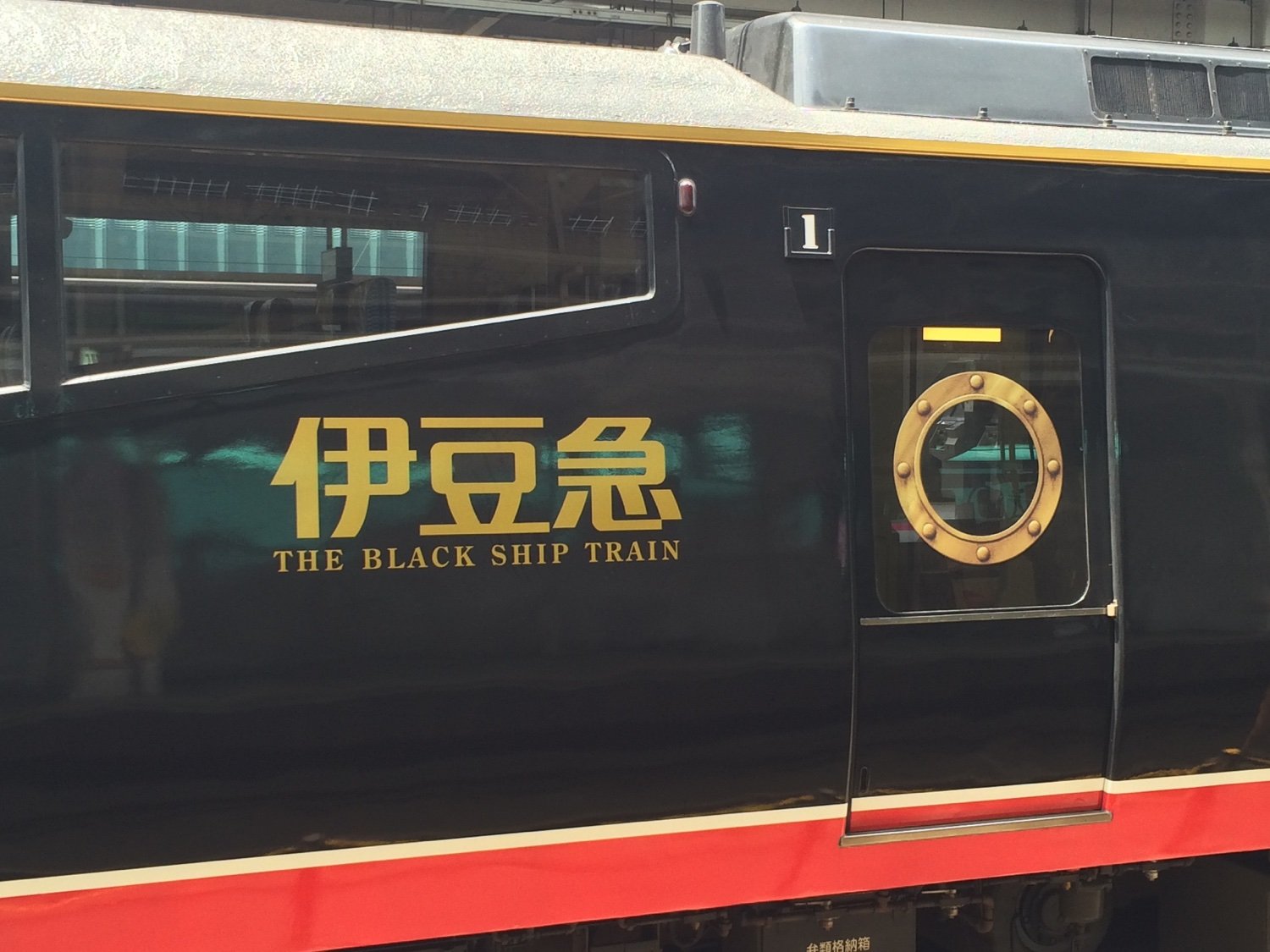 The Black Ship Train was first introduced in 2004, on the 150th anniversary of the opening of Shimoda port in Shimoda City, Shizuoka. The train was themed around the Japanese perception of Western sailing ships of that time. The first 2100 series to be themed as The Black Ship Train was the R-1. In 2006, R-1 was retired from service and R-4 was rethemed The Black Ship Train as its successor. R-4 is in active service to this day. Pictures taken by me in 2015. Part of my Rolling Stock series of posts. Previous Rolling Stock posts: - [Toei 6000 Series Streetcar](https://lemmy.world/post/19264388) - [JR East E491 "East iE" Track Inspector](https://lemmy.world/post/18994608) - [JR E351 "Azusa" Express Liner](https://lemmy.world/post/18791659) - [JR East 185 Series Limited Express Liner](https://lemmy.world/post/18407264) - [Sotetsu 20000 Series](https://lemmy.world/post/18245463) - [JNR 9600 Class Steam Locomotive](https://lemmy.world/post/18033470) - [Tobu 100 Series "Spacia" Strawberry Edition](https://lemmy.world/post/17901974)

_Above: Toei 6000 series streetcar No. 6152, nicknamed Ichikyu-san (193 or One-eye), being displayed in a preserved state at Arakawa Amusement Park in 2015._ This is not a random car that was chosen to be displayed instead of scrapped, 6152 is something of a celebrity in Tokyo. The 6000 series was built between 1947 and 1952. These streetcars were among the first new trains built by Japan after World War II. They were used on tram lines throughout Tokyo, primarily replacing pre-war 3000 series streetcars that were either lost to bombings or overworked until they literally fell apart. The few remaining 3000 series streetcars that still ran were refurbished to resemble the 6000 series and kept in service until repairs became impractical. Almost 300 of the 6000 series were produced and, by 1970, they represented the bulk of Tokyo's commercial streetcars in operation. However, it was in the 1970s that tram lines across the entire city were suddenly abolished. All tram lines were shutdown except for the Arakawa Line in northern Tokyo. Shortly after the shift away from streetcars, the entire 6000 series fleet was pulled from service and scrapped. ...With the exception of 13 cars. These cars were sent to the Arakawa City Depot for storage. One car (6152) was kept in service as a temporary vehicle that could be put on the line when needed. This is how "Ichikyu-san" started its journey. Ichikyu-san was immediately refurbished with newer parts cannibalized from more-recent 6000 series cars that had been dismantled in anticipation of being put back into limited service. However, Ichikyu-san remained in depot. It became a glorified tool shed for the workers there. But in 1986 it was refurbished again with new safety and electronic equipment and put back into full-time service on the Arakawa Line. In 1988 its power system and doors were updated and it was repainted in the original deep green and pale yellow livery it began life with (as seen in the photo) and was used for special events. In 1993, Ichikyu-san was removed from service. Its condition had deteriorated and was given an emergency inspection, repainted in a lighter shade of green, refurbished once again, and sent back into service. In 1994, additional upgrades were made to the car, including giving it a radio with the callsign "ninety-three". This is when car 6152 got its nickname "Ichikyu-san". Kyu-san for its callsign and Ichi for its singular headlight. Literally, it translated to 193, but also means One-eye (Cyclops). The train became a favorite among those that frequented the Arakawa Line. In December 2000 and just six months later in June 2001, Ichikyu-san was involved in two separate collisions with trains on neighboring lines. Both accidents could be traced to the fact that the aging 6000 series streetcar had only one brake and no redundancy system when it could not slow the car fast enough. Additional refurbishments which would now require a new braking system became financially impractical. In December 2001, 6152 was formally retired from service. Due to the unusual popularity that particular car had with the people of Tokyo, public calls for the preservation of Ichikyu-san were answered. Instead of being dismantled, 6152 was scheduled for preservation to the tune of 50 million yen, 20 million yen more than it would have cost to refurbish it so it could continue operating. Because of this, 6152 sat untouched for years as it was put towards the bottom of a list of other trains scheduled for preservation. A public call for support was placed on the internet, and in 2003, Ichikyu-san was put on display at Arakawa Amusement Park. In 2007, the train received extensive repair as it had been rotting in place with no real work done to it since the 1990s. This repair work included restoring the original dark green and pale yellow livery that it was given back in the 1950s. It continued to sit exposed to the elements until 2022. After the entire park has been temporarily closed for remodeling, Ichikyu-san was completely renovated and reintroduced as a restaurant called Cafe 193. It now sits under a canopy and its interior is open to the public for the first time in over 20 years. Today, only six other 6000 series streetcars remain, most are on public display in different areas around Tokyo, and with different liveries. But none of them are as long-served or as loved as Ichikyu-san. Picture taken by me in 2015. Part of my Rolling Stock series of posts. Previous Rolling Stock posts: - [JR East E491 "East iE" Track Inspector](https://lemmy.world/post/18994608) - [JR E351 "Azusa" Express Liner](https://lemmy.world/post/18791659) - [JR East 185 Series Limited Express Liner](https://lemmy.world/post/18407264) - [Sotetsu 20000 Series](https://lemmy.world/post/18245463) - [JNR 9600 Class Steam Locomotive](https://lemmy.world/post/18033470) - [Tobu 100 Series "Spacia" Strawberry Edition](https://lemmy.world/post/17901974)

(Just a stock photo, but at least it's green.)

_Above: East iE parked at Nishi-Funabashi Station in 2017, at the terminal of the Musashino & Keiyo Lines._ The JR East E491 series, nicknamed the East iE, is a non-revenue train specially designed to inspect the tracks and electrical connections to the trains. Only one set was made in 2002 to replace multiple older trains built for the same task. It services electrified lines under the authority of JR East (hence the nickname) and is housed in Ibaraki. Floodlights built into a special window on the side of the one of the cars: 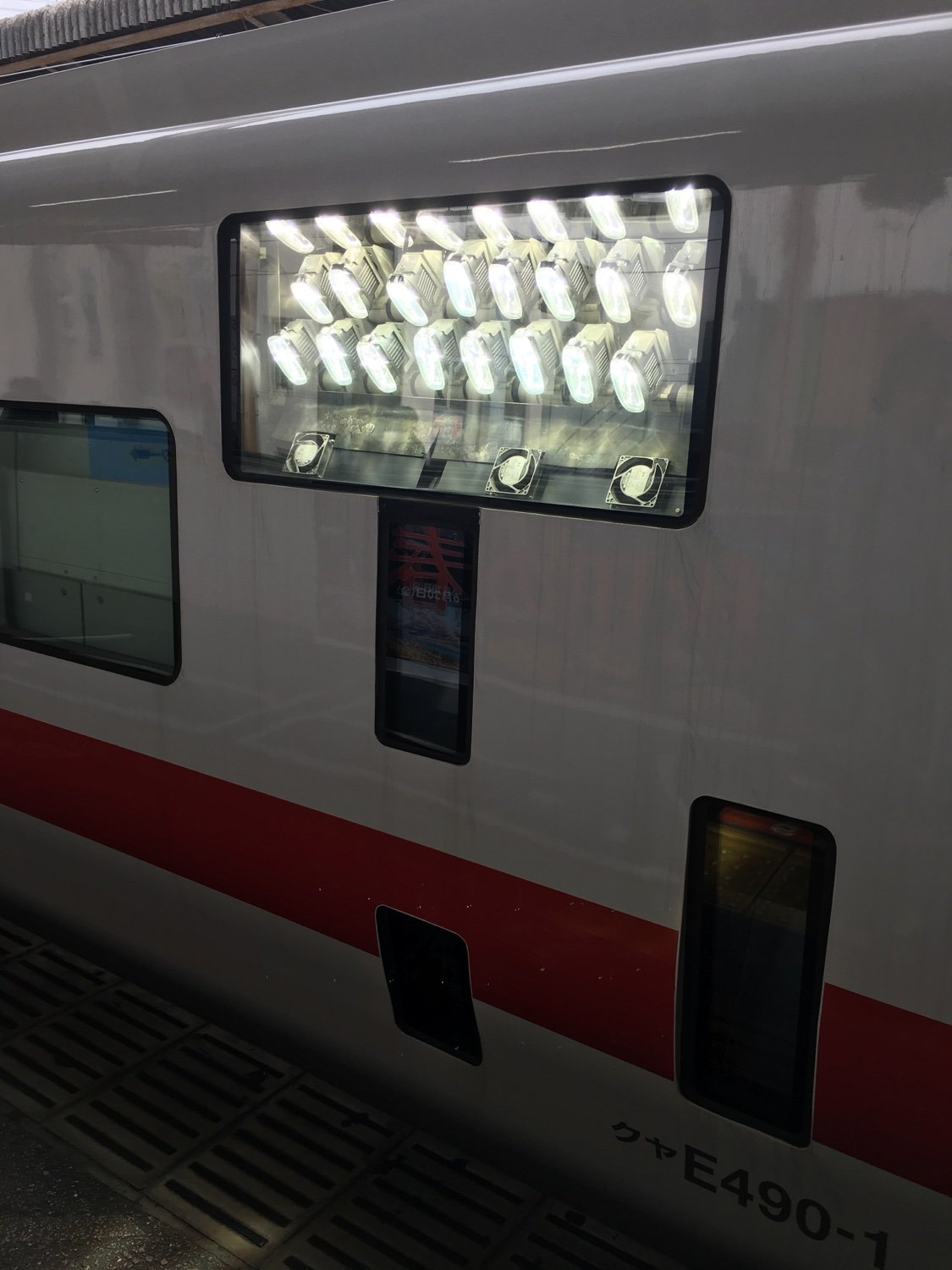 Other cars built for inspection purposes can be coupled with the East iE. For example, cars designed to test tunnel clearances or to carry additional testing equipment. East iE with its lights on: 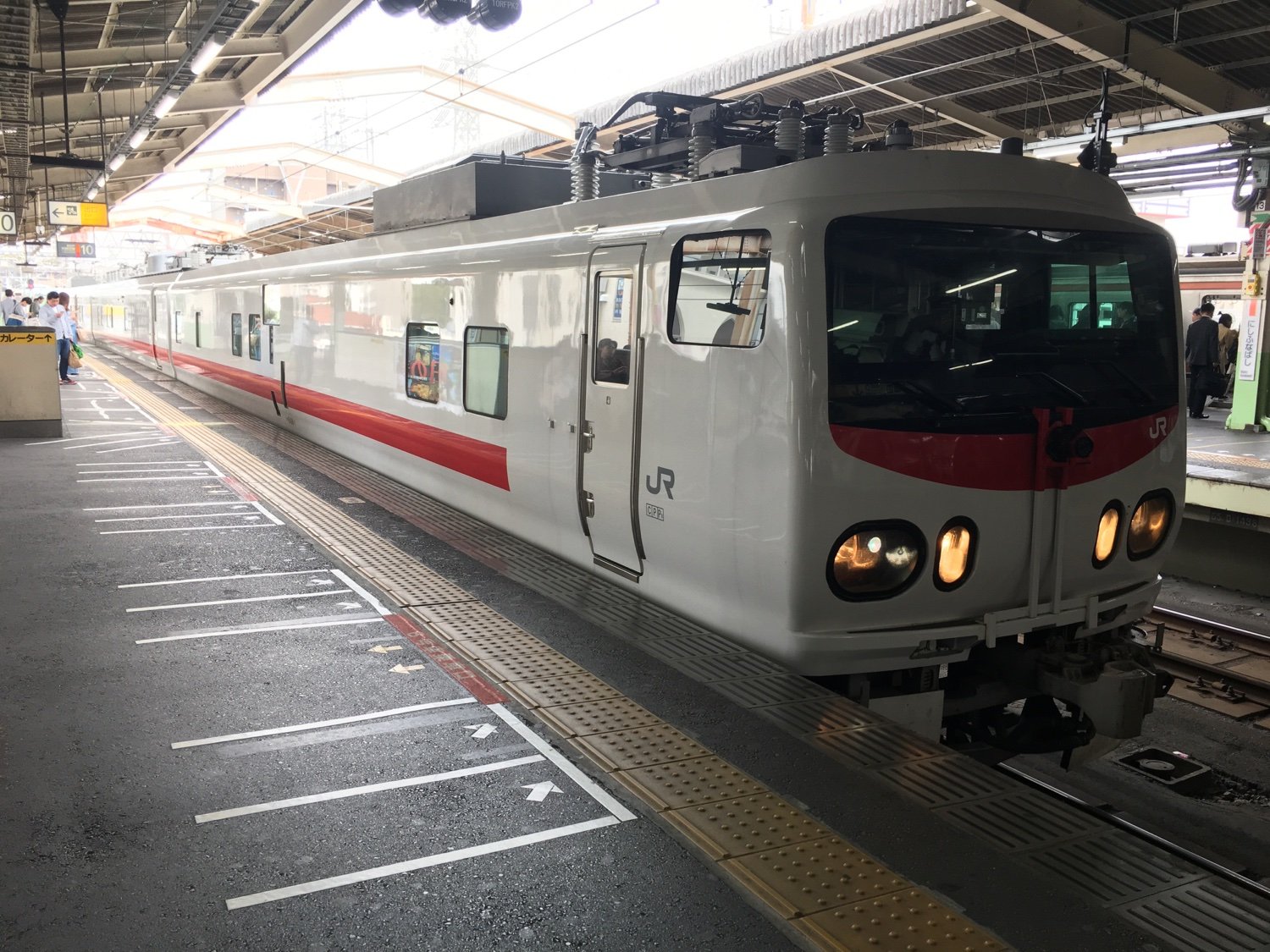 East iE has two sister trains. The East i, which is an inspector train built for the high-speed JR East Shinkansen lines, and the East iD, which is an inspector train built for the non-electrified JR East lines. The D stands for its diesel engine. All three trains are different models built at different times, but have the same white with red band livery. The East iE logo painted on the side of the train: 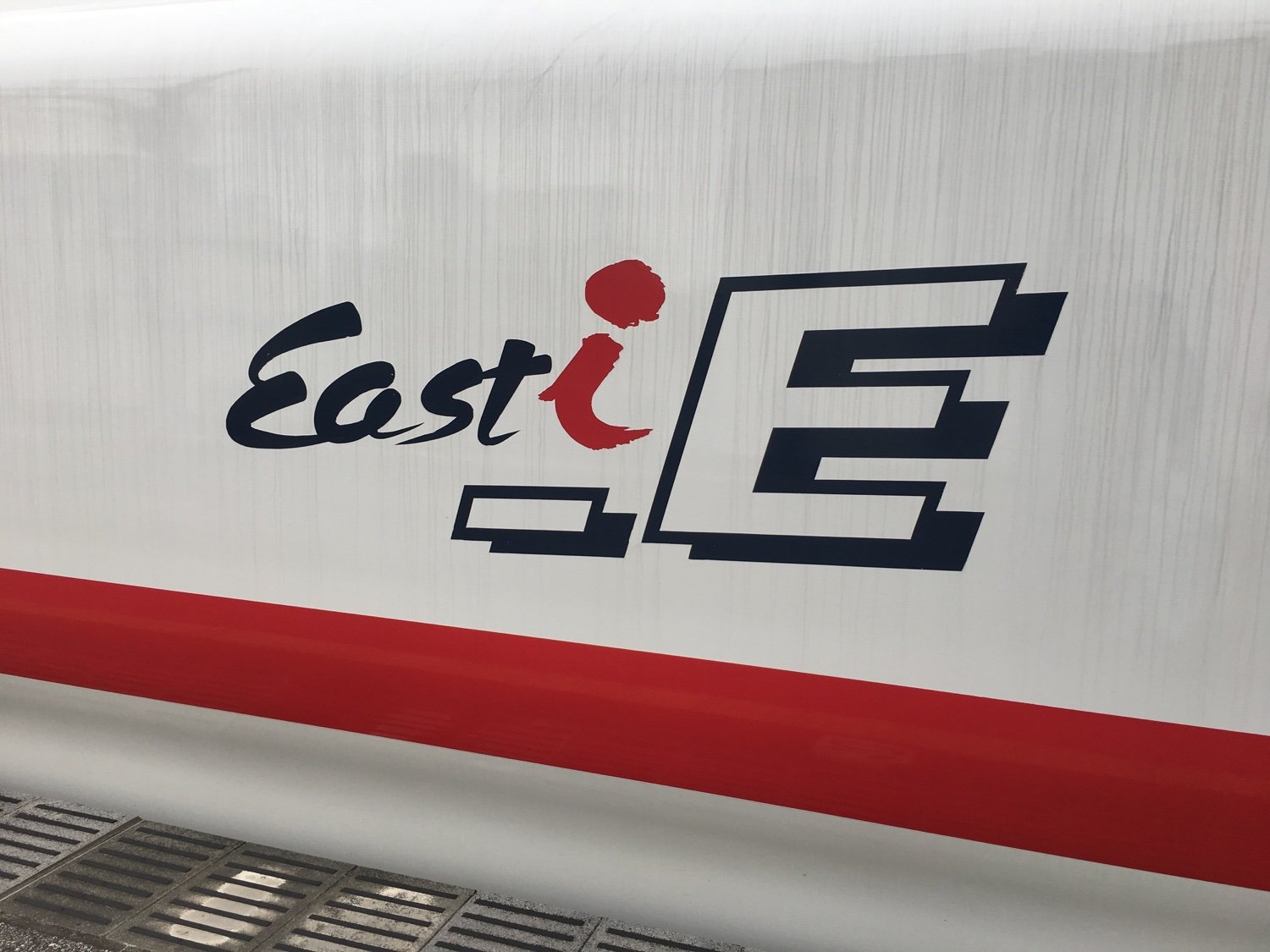 All pictures taken by me in 2017. Part of my Rolling Stock series of posts. Previous Rolling Stock posts: - [JR E351 "Azusa" Express Liner](https://lemmy.world/post/18791659) - [JR East 185 Series Limited Express Liner](https://lemmy.world/post/18407264) - [Sotetsu 20000 Series](https://lemmy.world/post/18245463) - [JNR 9600 Class Steam Locomotive](https://lemmy.world/post/18033470) - [Tobu 100 Series "Spacia" Strawberry Edition](https://lemmy.world/post/17901974)


